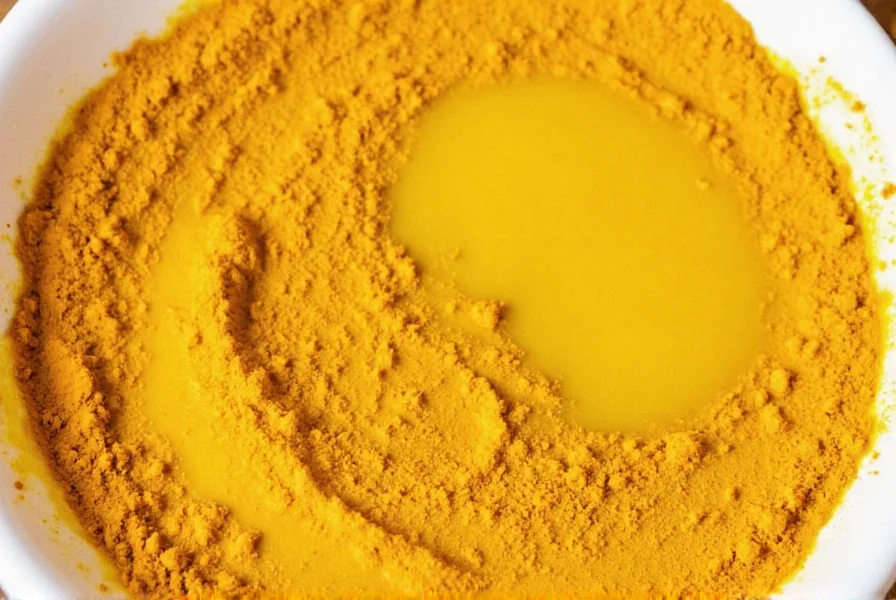When exploring natural remedies for skin concerns, many people wonder can turmeric lighten skin permanently. The straightforward answer is no—turmeric won't change your natural skin tone. However, research suggests it may help address specific skin discolorations through several biological mechanisms.
The Science Behind Turmeric and Skin
Turmeric (Curcuma longa) contains curcumin, a polyphenol responsible for most of its studied benefits. Laboratory research indicates curcumin may influence skin pigmentation by:
- Inhibiting tyrosinase activity, the enzyme crucial for melanin production
- Reducing inflammation that triggers post-inflammatory hyperpigmentation
- Neutralizing free radicals that contribute to uneven skin tone
- Modulating signaling pathways involved in melanocyte function
While promising, most evidence comes from in vitro studies or animal models. Human clinical trials specifically examining turmeric's skin-lightening effects remain limited and often use concentrated curcumin extracts rather than raw turmeric.

What Research Actually Shows
A 2020 review published in Cosmetics analyzed multiple studies on natural skin-lightening agents. Researchers found that while curcumin demonstrated tyrosinase inhibition in laboratory settings, its effectiveness in topical applications faces significant challenges:
| Research Finding | Human Evidence | Limitations |
|---|---|---|
| Curcumin inhibits melanin production in cell cultures | Laboratory only | Doesn't translate directly to human skin application |
| Turmeric extracts reduced hyperpigmentation in small human trials | Minor improvement in some studies | Small sample sizes; short duration; often combined with other ingredients |
| Natural skin brightening effect from anti-inflammatory properties | Anecdotal reports | Temporary improvement in skin clarity, not actual lightening |
The review concluded that while turmeric shows potential as a complementary approach for hyperpigmentation, it lacks the potency and consistency of clinically proven treatments like hydroquinone, kojic acid, or prescription retinoids.
Realistic Expectations for Turmeric Use
Understanding does turmeric really lighten skin requires distinguishing between:
- Natural skin tone: Turmeric cannot permanently alter your genetically determined skin color
- Hyperpigmentation: May help fade dark spots, acne marks, or melasma through anti-inflammatory effects
- Temporary brightening: Can improve overall skin radiance by reducing inflammation and providing antioxidant protection
Most dermatologists emphasize that any visible improvement from turmeric would be subtle and require consistent application over several weeks. The temporary yellow tint from topical application often creates an immediate brightening illusion that fades after washing.
Safe Application Methods
If you're considering how to use turmeric for skin lightening safely, follow these evidence-based guidelines:
- Perform a patch test: Apply a small amount to your inner arm and wait 24 hours to check for reactions
- Dilute properly: Mix 1/4 teaspoon turmeric powder with 2 tablespoons of carrier (yogurt, honey, or aloe vera)
- Limited frequency: Use no more than 2-3 times weekly to avoid potential irritation
- Short duration: Leave on skin for 10-15 minutes maximum to prevent staining
- Thorough rinsing: Use warm water and mild cleanser to remove all traces
Avoid combining turmeric with harsh exfoliants or other potentially irritating ingredients. The popular turmeric face mask for skin brightening typically includes complementary ingredients like honey (antibacterial) or yogurt (lactic acid for gentle exfoliation).
Potential Risks and Limitations
Before trying natural skin lightening remedies with turmeric, consider these important factors:
- Skin staining: The most common issue—temporary yellow-orange discoloration that may take days to fade
- Allergic reactions: Possible contact dermatitis, especially in sensitive skin types
- Photosensitivity: Turmeric may increase sun sensitivity, requiring diligent sunscreen use
- Minimal efficacy: Unlikely to produce significant results for deep hyperpigmentation
- Staining of fabrics: Can permanently discolor towels and clothing
People with known sensitivity to ginger or other plants in the Zingiberaceae family should avoid topical turmeric. Those with chronic skin conditions like eczema or rosacea should consult a dermatologist before use.
When to Seek Professional Help
If you're dealing with significant hyperpigmentation or uneven skin tone, evidence-based medical treatments offer more reliable results. Consult a board-certified dermatologist if you experience:
- Hyperpigmentation that worsens despite home care
- Skin discoloration accompanied by itching, pain, or texture changes
- No improvement after 8-12 weeks of consistent turmeric use
- History of skin cancer or precancerous lesions
Professional treatments like chemical peels, laser therapy, or prescription-strength lightening agents provide more significant results for turmeric and skin discoloration treatment concerns, though they require professional supervision.
Practical Recommendations
For those interested in exploring homemade turmeric skin lightening recipes, consider these evidence-based approaches:
- Basic brightening mask: Mix 1/4 tsp turmeric with 1 tbsp plain yogurt and 1 tsp honey. Apply for 10 minutes before rinsing.
- Spot treatment: Combine turmeric with a few drops of rosehip oil (rich in vitamin A) and apply only to dark spots.
- Night treatment: Mix turmeric with aloe vera gel and leave on overnight (test for staining first).
Always follow turmeric treatments with broad-spectrum SPF 30+ the next day, as your skin may be more sun-sensitive. Manage expectations—any improvement will be gradual and subtle compared to medical treatments.










 浙公网安备
33010002000092号
浙公网安备
33010002000092号 浙B2-20120091-4
浙B2-20120091-4